 |
New York Architecture Images-Soho Charlton-King-Vandam Historic District Landmark |
|
architect |
various |
|
location |
Roughly bounded by Varick, Vandam, MacDougal and King Sts., New York (50 acres, 15 buildings) |
|
date |
1800-1824, 1825-1849 |
|
style |
Federalist, Greek Revival |
|
construction |
brick |
|
type |
Houses |
|
|
|
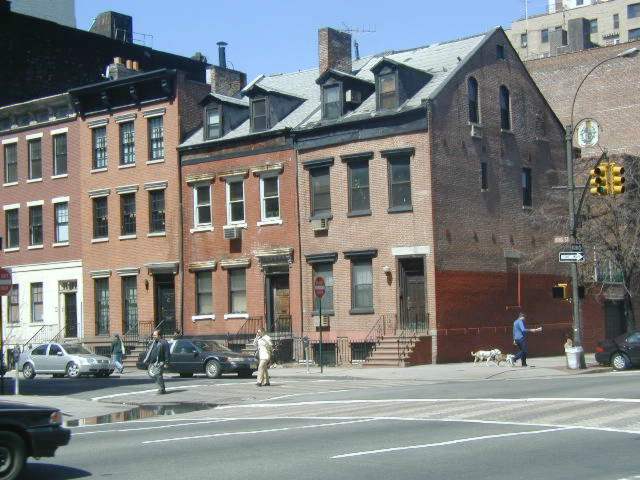 |
|
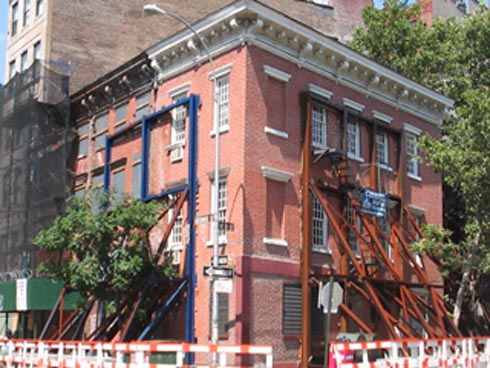  |
|
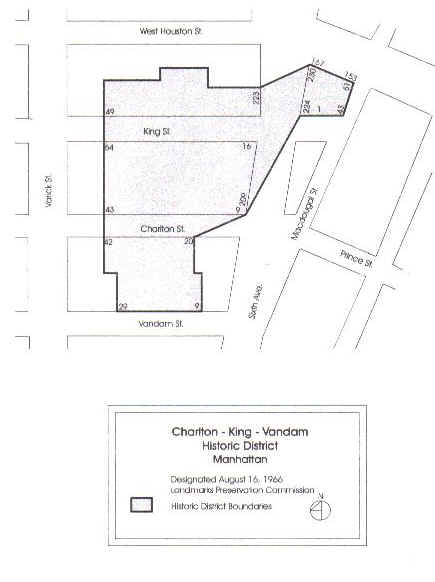 |
|
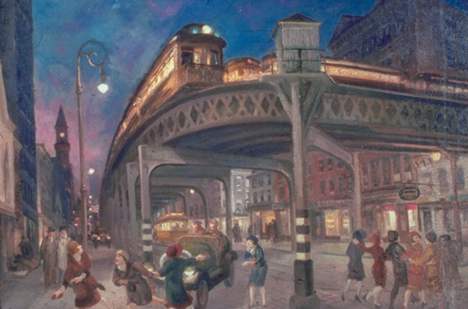 |
|
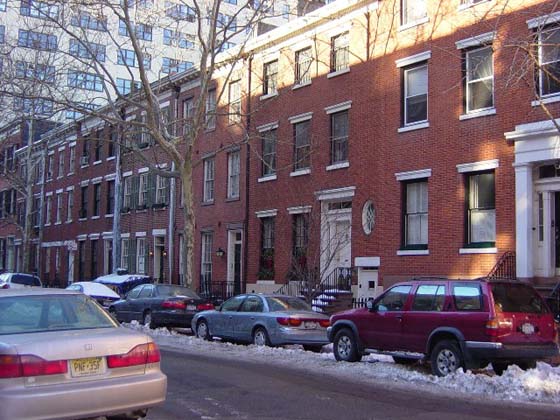 |
|
| This three block historic district in the South Village is located on the site of Richmond Hill, a colonial mansion that served as George Washington’s headquarters, the official residence of the Vice-President of the United States, and the home of Aaron Burr. The street grid dates to 1797, commissioned by Burr. The district contains the largest concentration of federal style rowhoues in New York City, as well as houses in the Greek Revival style and a Queen Anne style former school. The intrusion of 6th Avenue through the area in the early 20th century resulted in the destruction of several of the area’s houses; those adjacent to 6th Avenue were never intended to front a street (much less a major avenue) on their eastern sides, and thus present blank walls to the street. | |
|
notes |
When you are roaring up Sixth Avenue
in a cab sometime, distract your attention from your cell phone and take a
look at the edge of some very old houses at King Street. They are part of
the Charlton-King-Vandam Historic District and comprise some 72 Federal- and
Greek Revival-style houses, many of them built as early as the 1820s. They
stand on land known from the late 1700s as Richmond Hill.
The land had passed down from the Dutch era, the late 1600s, from a freed slave called Symon Congo to Trinity Church to British major Abraham Mortimer (who built the mansion that gave Richmond Hill its name). After the revolution, Richmond Hill became the offical residence of the Vice-President for just one year when the Capitol was located in NYC. In 1794, Richmond Hill became home to Senator Aaron Burr, later Vice-President and Alexander Hamilton's killer in their 1804 duel. In 1817, Burr sold the property to fur magnate John Jacob Astor, but the mansion's days were numbered when Charlton and King Streets were cut through. It was placed on logs and rolled 45 feet away from the street. This bought it some time, and it survived as a tavern, a country resort, and a theater; it was razed in 1849. Meanwhile, Astor saw a profitable real-estate investment at Richmond Hill and built dozens of row houses on Charlton, King, and Vandam Streets, and luckily, most have survived to the present. |
|
links |